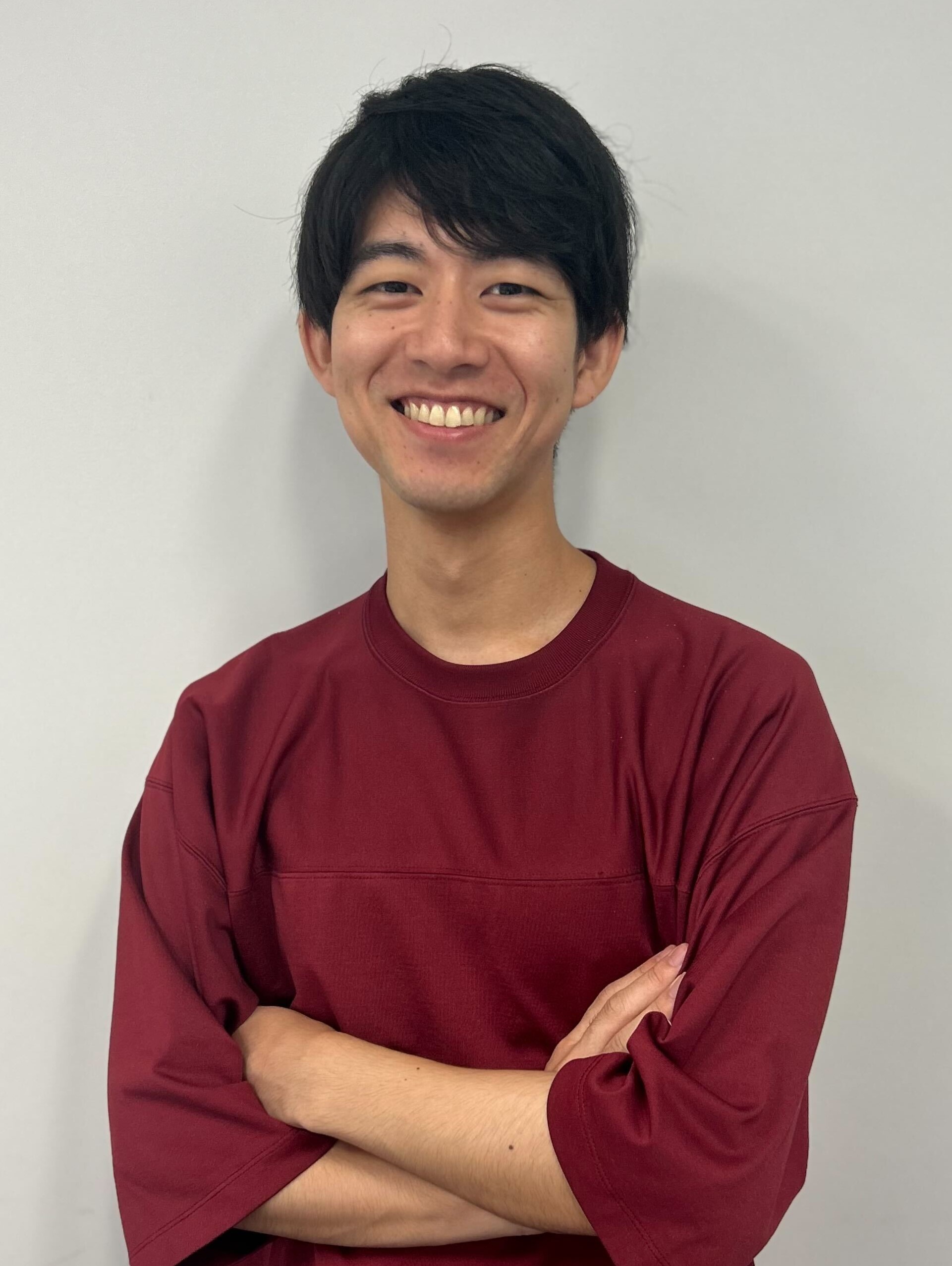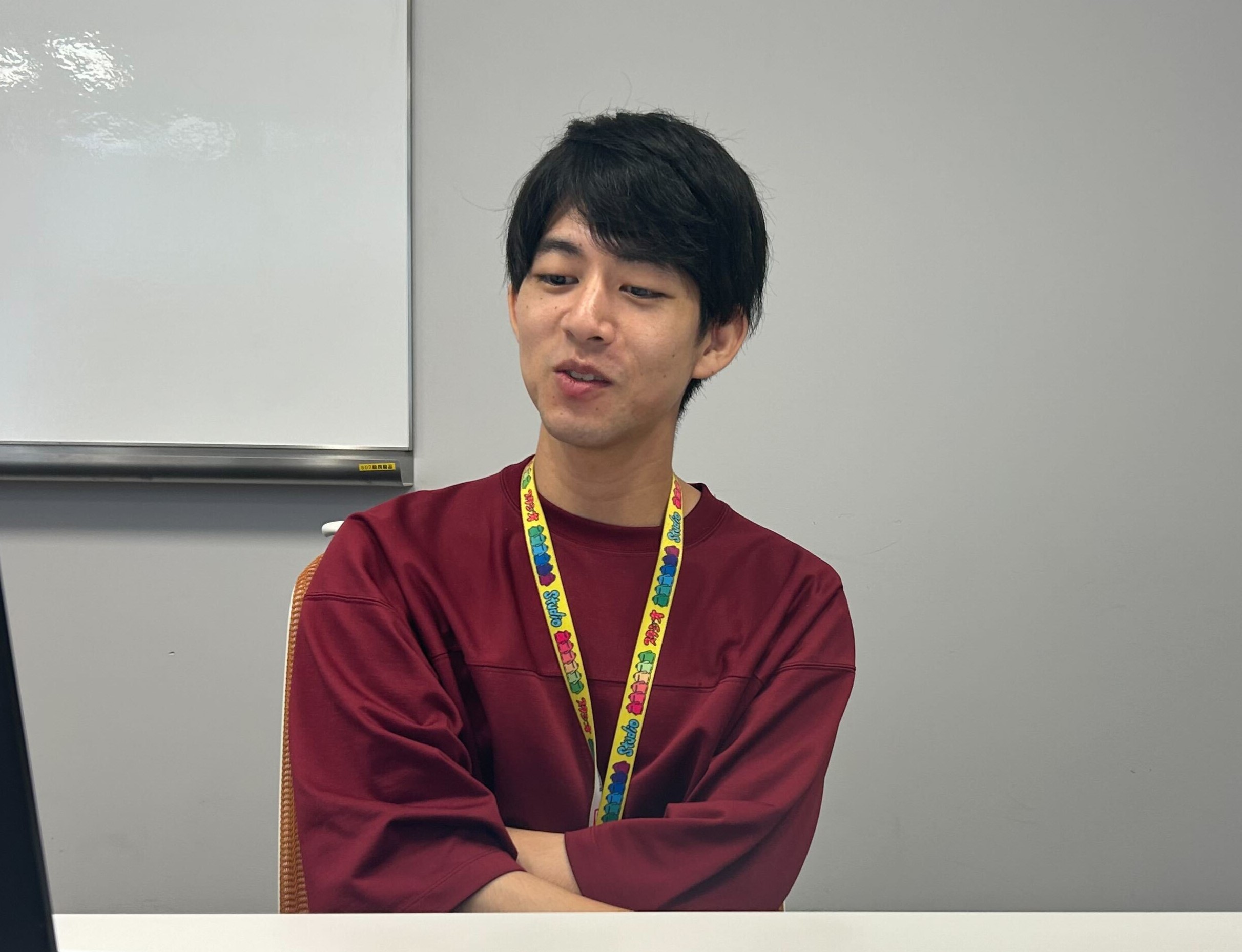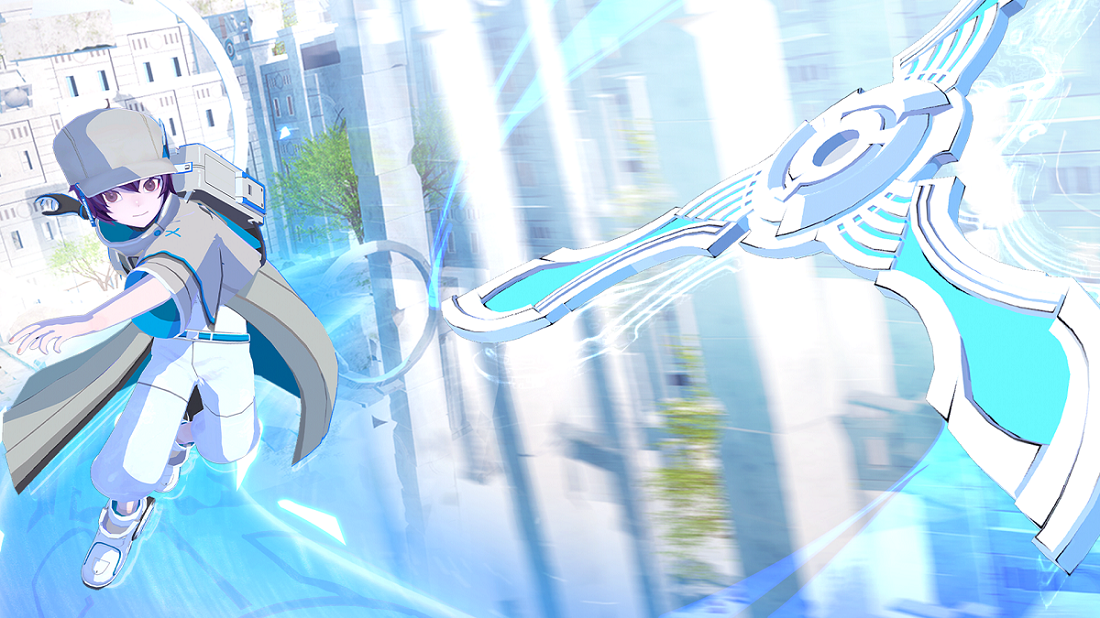In this episode, we sat down with Ryo Oji, an Engineer hired through the new graduate program on his second year with Bandai Namco Studios!
Second-Year New Graduate Hire Engineer Ryo Oji

Core Technology Department,
Advanced Technology Unit,
Game AI Section,
Engineer
Ryo Oji
―Thanks for taking time off your busy day! Can you tell us your current affiliation and what you’re working on now?
I’ve been assigned to Technology Studio, Group 1, Core Technology Department, Advanced Technology Unit’s Game AI Section.
It’s in the name, but my team consists of engineers who work with game AI. Specifically, I learn about the fundamental technologies behind game AI and provide technical support to in-development titles.
—What kind of research did you do in university?
When I was an undergraduate, I did research on how emotions propagate. An example would be when there’s equipment trouble during a concert. Normally, it would bring the mood down, but if someone starts voicing their support for the crew, it would rile up the crowd and make everyone feel positive again. My research was to simulate how these emotions would propagate within a crowd.
During my post-graduate studies, I did research analyzing dances. Dances are just a combination of individual moves, and I researched methods to reproduce these combinations in 3DCG. I tried to create complex routines by isolating the basic elements of a dance. I got to use 3DCG software like Blender and Unity to make the final footage, so that might have been where I got to experience the basics of game development.
—What convinced you to find employment with a game company?
Simply put, because I like games! I liked them since I was a kid, and had a variety of consoles when I was in elementary school. I think we had one of every console at home (laughs). I chose to study computer science in university to broaden my choices after graduation, and I realized that I could apply my skills to game development the more I programmed, so I sought to work for a game company.

—Can you share an experience of something you did at school becoming useful at work?
One thing is from my post-graduate research, where I created animations from rows of data containing basic animation elements. I remember thinking that it helped me learn how animations are made when developing games.
Another would be the ability to explain things to people. Importance is given to your ability to logically describe your research when communicating in academia or between engineers. When we presented at academic conferences, we had to explain our research and our methods in 10 minutes. I gained the ability to explain technical concepts to non-engineers because I had many opportunities to do so during my school days.
—Do you have any memorable stories to share since you started working at BNS?
I’m in charge of implementing an NPC that incorporates AI technology in a game that’s currently being developed, and another creator told me that my character looked kind of mechanical when they saw it in motion. The NPC I was making stared straight ahead and only walked forwards. It wasn’t very natural-looking.
In an effort to make the NPC look more natural, I added LookAt behavior to it so that it would face the player when the player approached the NPC. Simply put, LookAt makes something face the direction of where a game object is, but this simple action made it look like the character was paying attention to its surroundings. When I showed the same person the same NPC with the behavior added, they said that it was a lot better!
BOOMEROAD, a game developed in a cross-country team with Bandai Namco Studios Malaysia
—Can you tell us something about your new hire training?
During my new hire training, I developed a game called BOOMEROAD. It’s an action-adventure game where you throw a boomerang and ride on the path it leaves behind. It’s set in a world with floating ancient ruins, so the big sell of the game is the exhilarating traversal method. It’s available on Steam for free, so give it a try!
There were some difficulties during development, one of which being the need for multi-lingual communication as our team also contained members from Bandai Namco Studios Malaysia.
There were nine people from Japan, and three from Malaysia on our team. Since nobody on the Malaysia side could speak Japanese, myself, another person from the Japan side, and someone outside the team at the Malaysia studio acted as interpreters at the beginning of the training. We became more familiar with each other over the course of development, and the other Japanese team members tried to communicate in English. By the time we entered the middle of development, I barely needed to interpret for others. Ultimately, I felt like we got by with passion (laughs).

—What was something that made you feel glad you joined Bandai Namco Studios?
It would have to be the fact that I get to work with people who have experience developing all kinds of AAA titles. Bandai Namco Studios mostly make AAA games, so I might be stating the obvious, but there are many in-house creators who have worked on famous games. AAA game development demands a high standard, so the teachings and knowledge of people who have met and gone above these standards are valuable. Recently, I’ve been working with the people who made the online lobbies for TEKKEN 8 and I’m learning a lot from them!
My reason for choosing BNS was also because there was a department making practical game AI, not just for cutting-edge research purposes. There were also few developers that had departments focusing on game AI. I’m glad that I could work on developing game AI when I started working here.
—Do you have a personal rule that you keep in mind, or something you’re confident about?
It would be to never stop learning. Of course, artists are in charge of things like visual expression or looks, but when you boil it down, a game is software, so what can be made starts and ends with what the engineer can do. You can say that my skills will affect the quality of the game, so I constantly have to keep up to date with technology and knowledge or else we won’t be able to beat our competition.
For example, if a planner comes and tells us about something they want to do, and the engineers say that it’s impossible, that’s the end of it. But I think the ability of an engineer is measured by their ability to make these things a reality. That’s why it’s important to keep learning, to accumulate the knowledge needed for us to think of solutions when we work.
—Lastly, please tell us your personal mantra
I’m currently making game AI in the capacity of project support, but in the future, I’d like to implement something like an all-purpose game AI engine that is used company-wide. I hope to make development more efficient and even create never-before seen experiences by doing this.
My personal mantra would be “Just do it”. I think it’s important to take action when there’s something you need to do instead of thinking too much about it. This also reduces time spent worrying about tasking, and I believe that actually doing the work will help me grow.
—Thank you very much!
Related articles: Read these interviews if you’re interested in what our engineers do!
What Made You Think to Use AI to Make Games More Fun? (Yohei Hase)
テクニカルディレクターとは?幅広い経験を積むことの大切さ(能登慶太)
©Bandai Namco Studios Inc. Published by Phoenixx Inc.
©2024 Valve Corporation. Steam and the Steam logo are trademarks and/or registered trademarks of Valve Corporation in the U.S. and/or other countries.
Unity, the Unity logo, and all related names, logos, product and service names, designs, and slogans are registered trademarks of Unity Technologies or its subsidiaries.




